by Bob Bahr, Editor PleinAir Today
Michele Z. Farrier is very careful with her underpainting, in part because she always hopes that her piece will feel done to her from the earliest stages, when the abstract nature of the painting most simply but effectively states the scene’s feeling.
A heightened example of this approach is visible in Farrier’s “What Lies Beyond,” which was chosen for display in the Wyoming State Museum from January-March 2017. “That one is in the extreme,” says Farrier. “But I like to keep it as simple as I can. Sometimes it’s evident when I get the basic shapes laid in that it needs more, so I do more. Sometimes I’m like, ‘That is good,’ and I leave it like that. I like the abstract quality, but I do want it to read as a landscape.”
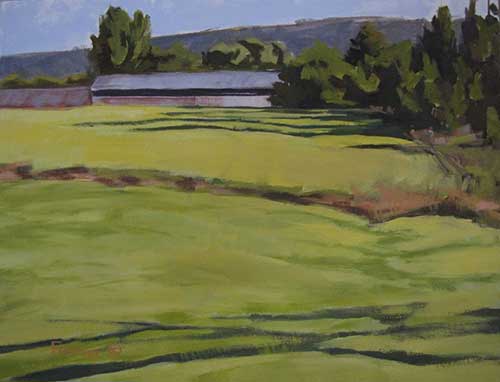
Like many plein air painters, Farrier is a somewhat dangerous driver because scenes outside the car window sometimes cause sudden stops. “With that piece, for example, I was driving by and I almost slammed on my brakes,” says the Wyoming artist. “There was detail in the foreground and in the shadow, but I didn’t really need it, so I didn’t put it in. When I am driving around and looking for a composition, often patterns made by shadows are what draw me in. Then I want to say as little as possible to convey that feeling. The less information, the more intriguing it is. It leaves it open to your interpretation. Maybe it will remind you of what you felt on a given morning, rather than simply having the piece look like the Tetons, for example.”
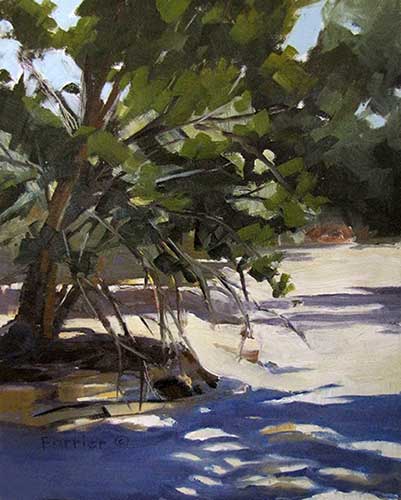
This process works for Farrier in part because she moves slowly and carefully in her beginning steps of a painting. “I do a lot of thumbnail sketches with a Sharpie pen, and use a viewfinder,” she says. “I do many thumbnails and they give me a lot of ideas. I use a value finder or red glasses to see the values in the scene. And I take extensive notes, for as long as 20 minutes, and then when I have the design, I have it all established before the light changes.”
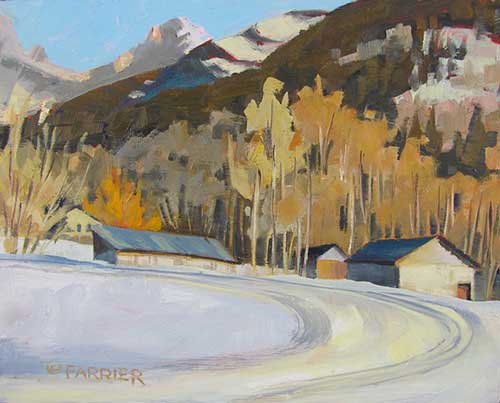
The next stage is the underpainting, which constitutes a composition created with vine charcoal if she is working in pastel, and a thin wash of Gamsol and a bluish color if she is using oil paints. She generally works on 8” x 10” surfaces and paints with a size 4 or 6 brush. “When I fill in my shapes, that is the slowest stage because values are my weakest area, so I take time to make sure I get them right,” says Farrier. “My underpainting is slow because if that’s not right, the whole thing isn’t going to work. I lay my shapes in pretty thick, and the brushstrokes are very deliberate.”
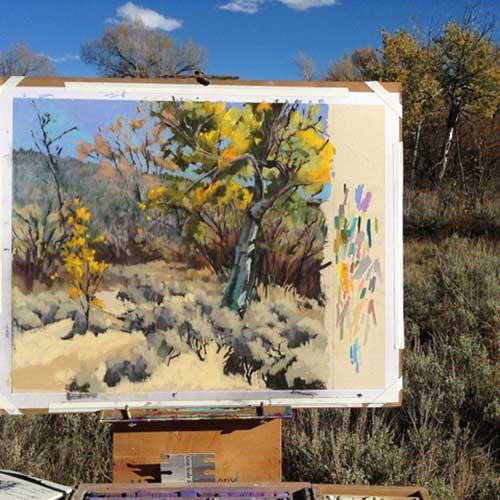
If the painting seems to need more, she does more. “If it doesn’t read well as a landscape, I define it further with details or values,” says the artist. “I do like mark making; I like making marks, but on a very abstract level. It is more natural to me to look at things as shapes.”
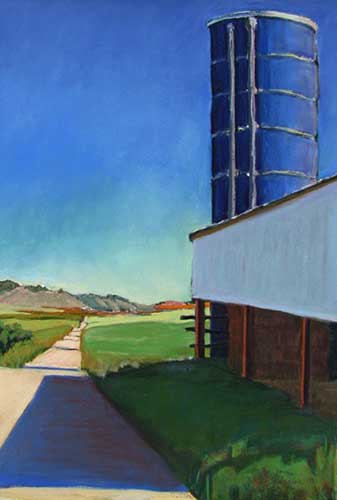
Her goal is to say something as simply as possible, and to leave a record of her work so the piece reveals layers of paint application — as artists such as Diebenkorn did. “What I would love is if I saw something, laid it down, and that’s it,” Farrier says. “I want it to look spontaneous, not labored. The danger is if I start seeing colors, and I lay over too much of what I put in my underpainting.”




